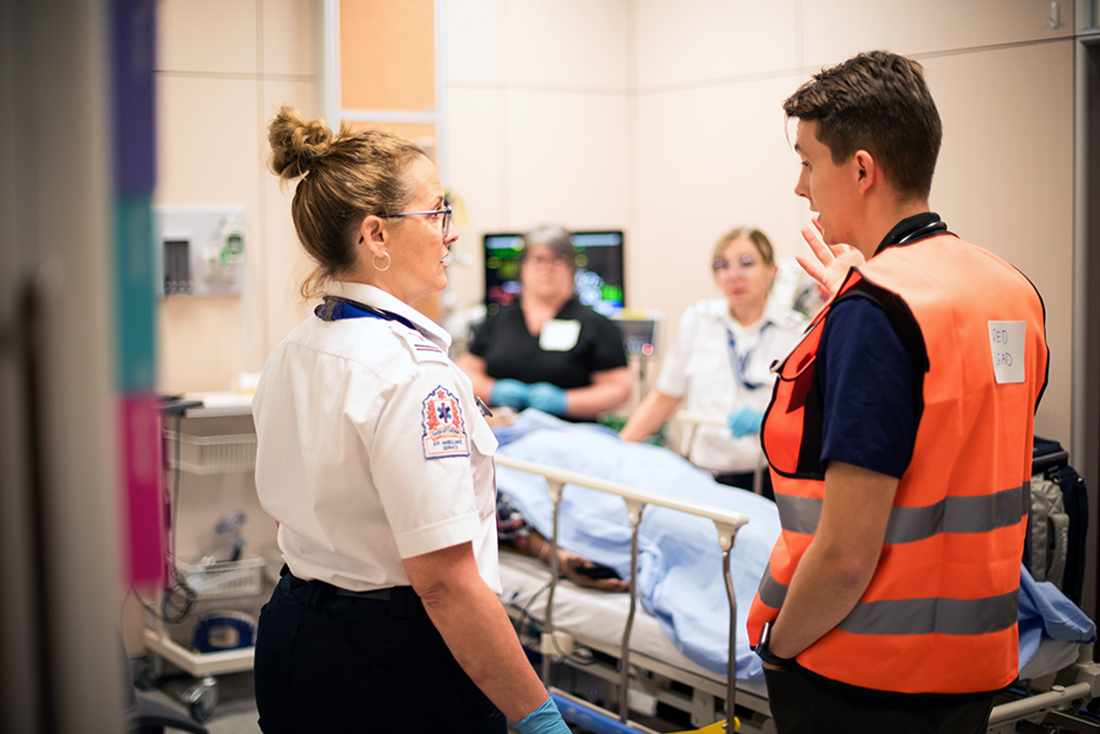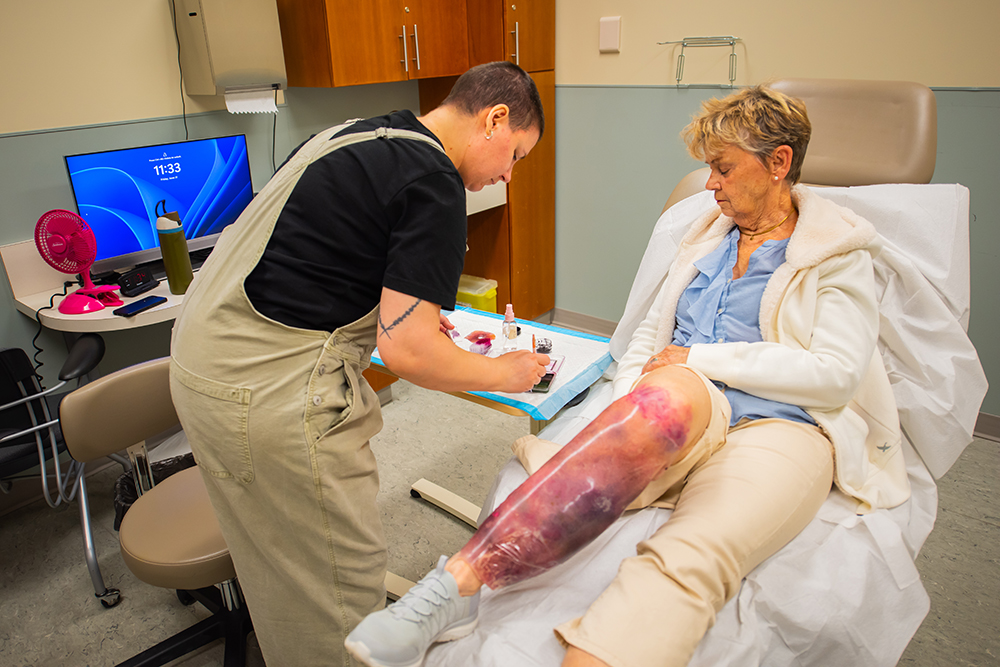
Innovative USask collaboration helps medical residents develop essential disaster response skills
An ambitious simulation exercise at the University of Saskatchewan Clinical Learning Resource Centre is addressing the need for disaster management curriculum in Canadian emergency medicine residency programs.
By Health Sciences CommunicationsOn June 21, dozens of University of Saskatchewan (USask) College of Medicine emergency resident students, university faculty and staff, and trained simulated patients joined local physicians and first responders in the Health Sciences Building to simulate the unthinkable — a mass shooting during a public event.
2024 marks the third year that a simulation of this type and magnitude has been administered through the USask Clinical Learning Resource Centre (CLRC) to support emergency medicine resident training at the request of the College of Medicine. Known as the Emergency Resident Mass Casualty Incident (MCI) Simulation, this multifaceted educational experience has been meticulously planned by the College of Medicine, the CLRC, and its partners to share knowledge and help learners practice essential skills in a safe, simulated environment. Previous iterations of the simulation involved scenarios focussed on an aviation accident and a chemical plant explosion.
The initial proposal to develop this method of teaching mass casualty intervention skills at USask is the result of research published by emergency physician Dr. Rob Carey (MD), a College of Medicine alumnus currently working as an assistant professor of emergency medicine and as a simulation co-ordinator with the college’s Postgraduate Medical Education (PGME) Office.
“Dr. Patrick Gilbride (MD) and I took on this curriculum after recognizing a need within our residency program. Across Canada, disaster and mass casualty medicine education is very variable, so we strived to create something unique and realistic to provide an experience like no other,” said Carey.
The full day event was comprised of multiple concurrent components based on scenarios developed by Dr. Carey and Dr. Gilbride in partnership with the CLRC, the USask College of Medicine, and the Saskatchewan Health Authority. Beginning with a didactic session from lecturers and guest speakers, participants then shifted to practicing skills through a low-fidelity tabletop simulation that provided an opportunity to discuss the roles and responses that would be required during the high-fidelity simulation that followed.
This immersive simulation experience featured participation from STARS and Saskatchewan Air Ambulance, the Saskatchewan Health Authority, Saskatoon Police Service, Medavie Health Services West, the Dilawri Simulation Centre in Regina, and Saskatchewan Polytechnic. During this session, emergency residents interacted with volunteers and actors trained as simulated patients to safely replicate the chaos of a mass casualty event involving first responders and emergency physicians.
In a real incident of this kind, these diverse groups of allied health professionals need to efficiently work together as a team during the worst moments of peoples’ lives.
“They were all represented at this event, rushing in or tending to simulated patients wearing realistic wound makeup, or practicing injury treatment skills through specialized manikins and other task training equipment,” said Mark Walkner.
Walkner is the director of clinical learning services in the USask Health Sciences and leads Clinical Learning Resource Centre operations at the university. For him, large scale simulations such as this help safely advance learning beyond theoretical exploration and into a world that feels quite real.
As the unit entrusted to partner with the College of Medicine and facilitate the mass casualty simulation, the CLRC is no stranger to providing healthcare students and community partners with the opportunity to safely learn, collaborate, and practice critical skills.

“We typically run about 2,000 events each year but this one is quite unique. CLRC staff spent months preparing the simulated patient actors, the equipment, and even the extensive moulage needed to accurately replicate a range of injuries. It took three days just to physically arrange our spaces for the scale of this training exercise,” he said.
An additional pre-hospital simulation was also created this year as an opportunity for allied health professionals and first responders to practice their own skills alongside USask learners. In this session, participants recreated the location of the fictional mass shooting in order to refine abilities involving onsite patient triage and evacuation, communication, resource management, and more.
A vital aspect of the simulation involves a complete debriefing at the end of the final exercise. The debrief provides an opportunity for all participants to transition out of the potentially triggering simulation and also works to help review actions taken and identify further learning lessons for students and those responsible for developing or facilitating the simulation.
For student participants like College of Medicine emergency resident student Lauren Roberts, simulating a mass casualty incident is a unique and important experience.
“As emergency medicine physicians, we are on the front lines of responding to mass casualty events, but it is difficult to train for these events as they do not occur frequently in the real world. Through events like MCI day, we are able to collaborate with our allied health partners to work through these challenging events and troubleshoot issues that may arise,” said Roberts.
“Though we always hope not to need these skills, the ability to prepare for these events in such a high-fidelity environment means that we are as prepared as possible to care for patients safely and effectively should the need arise. We are very fortunate as residents at USask to have access to the CLRC and the opportunity to participate in large-scale simulation events like MCI day.”
To learn more about the simulations facilitated by the Clinical Learning Resource Centre (CLRC) at the University of Saskatchewan, visit healthsciences.usask.ca/CLRC.

